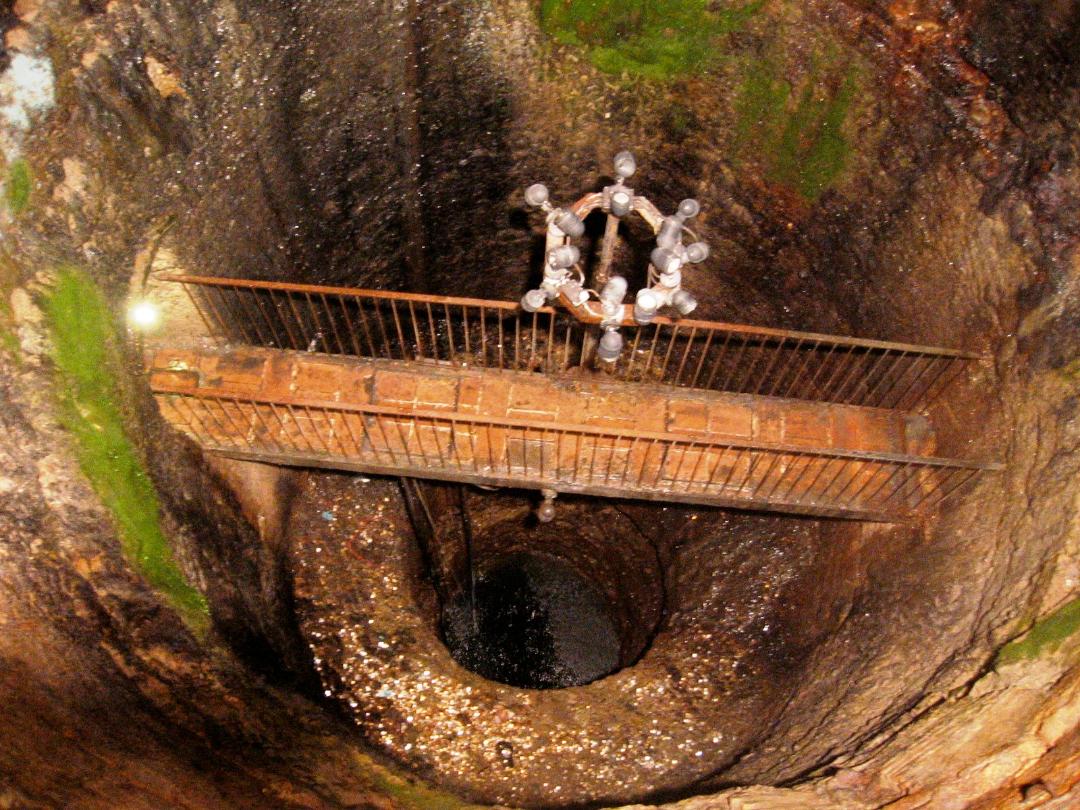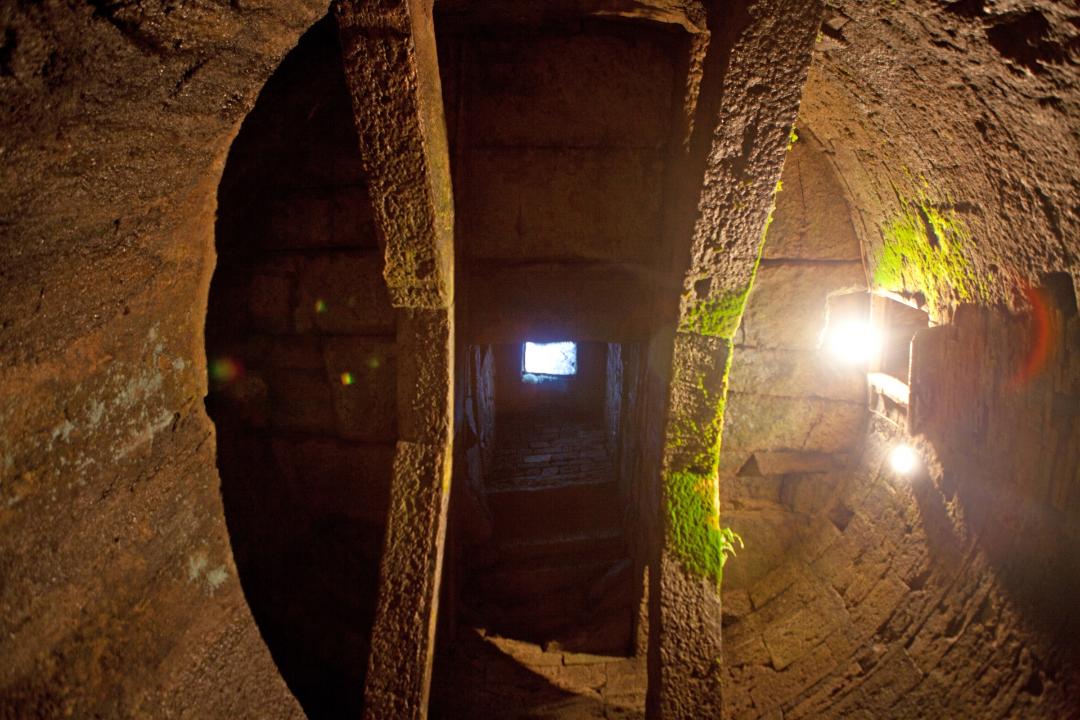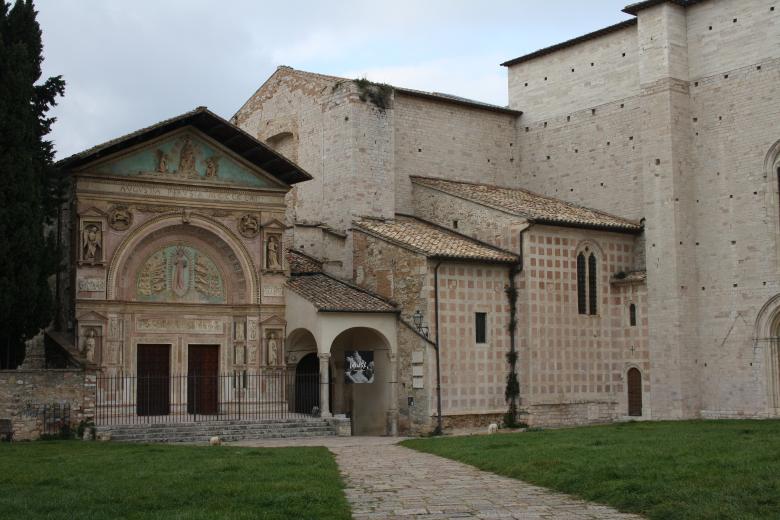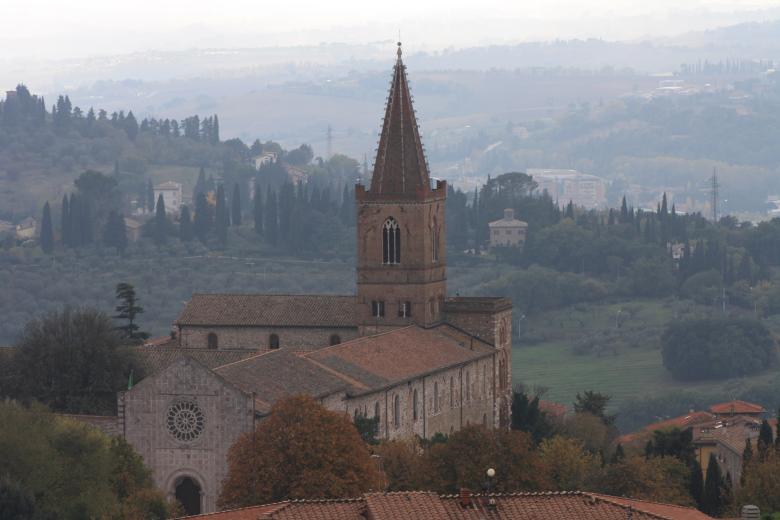Constructed with the same blocks of Travertine as the wall belt, it was excavated into the so called "tassello mandorlato"—a coarse-grained sedimentary rock composed of rounded fragments—that is typical of the town. The well is composed of a cylindrical shaft more than 30 meters deep with a maximum diameter of 5,60 meters, which narrows while going down—like a funnel—into the lower part. It presents two trusses, "capriate", supporting its roof, each one consists of four large blocks of travertine—two horizontal and two oblique—held together by a central keystone.
This system, which is technically very similar to the cistern in Via Caporali on the opposite side of the city, served to support a floor pavement made of stone slabs of travertine where an opening allowed water to be drawn from. This work of engineering, whose centrality and monumentality does not leave doubt as to its public destination of use, dates—basing the judgment on the technical similarities found with the wall belt—from the 3rd century B.C. Its maximum capacity is estimated to be 424.000 liters of water and it was the largest among the wells and cisterns in town, all of which were in use until the construction of the first public aqueduct in the 13th century Information
Tel. + 39 075 573 3669 – pozzoetrusco@fondazioneranieri.org





























.jpeg/0d7d918e-eddd-ed4c-9da2-23a6917261f0?width=780)
.jpg/57eda7af-f14d-d05d-f11c-d1cdb56c5f9f?width=780)






